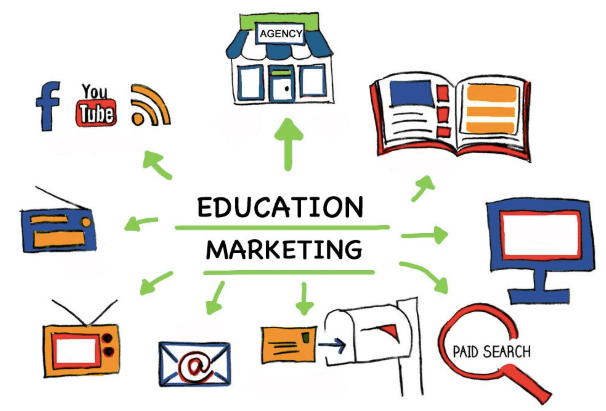
Even though the first thing that comes to mind when someone says education marketing is not business or a marketing plan, it is actually quite a competitive one. This year is proving to be quite testing for any kind of business, especially education, due to Covid-19.
However, even before this pandemic, people were starting to realize that higher education wasn’t of the highest priority compared to what it was before, and because of that, there has been a major downturn in undergraduate and other high-education student enrollment so university marketers are getting pressured to deliver.
So, in order to maintain stability and possibly get an increase in enrollment and possibly revenues, an effective marketing plan, or digital education plan should be created.
While every student regardless of their background is different, higher education marketing has a unique set of challenges. But, like every challenge and problem, there is always a solution.
In this article, I will discuss the techniques of higher education marketing that you can use to increase enrollment and once you’ve got that, I will also include how to write an email newsletter which is a part of higher-education marketing in order to maintain the stability and revenue you already have.
Education marketing strategies
Like all marketing strategies, as mentioned before, education marketing faces challenges that can be fixed or updated by creating an effective marketing plan. While this may seem like a focused industry, most marketing strategies can be interchangeable throughout. Here are some effective education marketing strategies you can use.
1. Use social media and video ads
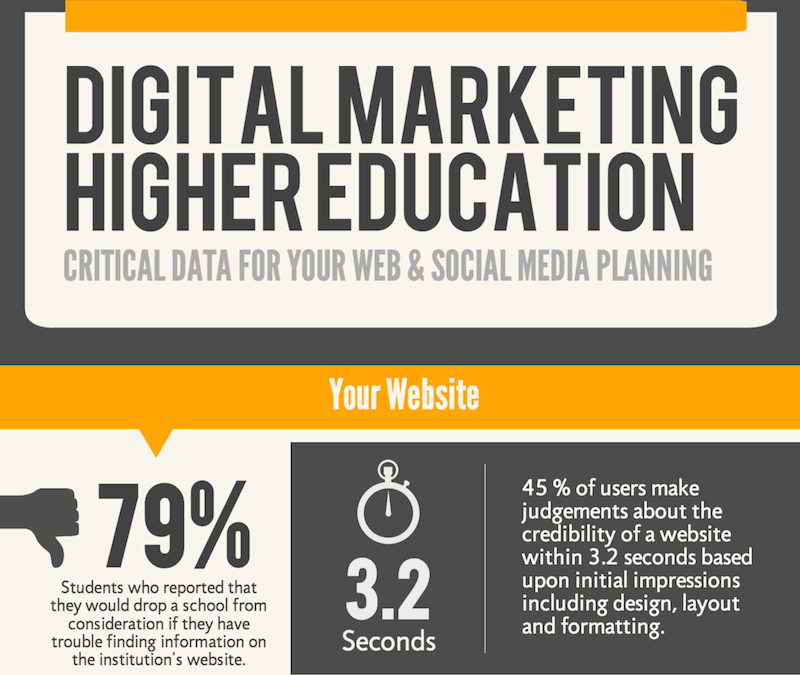
It is evidently clear that social media has become a space for everyone of every age range to spend their time. Regardless of whether your target audience is teenagers just starting their college search or people trying to stay updated, it has become harder for people to sit and read anything longer than social media posts and are moving towards videos to get the same information.
Creating videos is an effective tactic for any audience, but universities know that that is where their audiences are heading so they try to create strong video content that encourages their viewers to learn about the academic aspects of higher education and read/watch the information provided.
2. Promote online learning

Even before the time of Covid-19, more students are looking to online learning to continue their education. A lot of them believed that by combining work and education, they were able to jump right into the workforce after graduation. Marketing your online classes can be effective in the long term for more students.
However, before you decide to do this, you need to create a good program with a variety and professors that can support that demand. Your primary goal should be about perfecting online programs and once that works, you can find placements and begin marketing.
3. Use fewer ads
The traditional methods of advertising like mail, newspaper ads, and TV ads are starting to decline and like any form of marketing, it is important to adjust it to the times. So, instead of pushing ads and endless content, try to work on ads that strengthen copy and design. This can help in the long term because it shows that your university is able to adapt to any situation.
4. Move to mobile/emphasize SEO
More ads are moving online and like it or not, it should be every university’s goal to have a good online presence. Most are now using social media platforms to get their point across and hit their target audience. The education market is trying to target high school and transfer students so using things like Instagram and Facebook would be the best platform because that is where you will most likely be seen.
Another thing that is important is that your website is mobile friendly, it should be efficient and simple and allow you to understand your audience better and keep up with their behavior and where and how they consume their content.
Another thing that is important to focus on is enhancing your SEO, it has become an important tool for any business or organization. Universities have started optimizing their SEO because more people are turning to using online resources.
You need to use keywords that focus on your university and what you have to offer because it will most likely be the case that different universities will be using the same keywords and you will lost in all that similar information.
5. Invest in a public/private partnership
Pretty much every university around the world is trying to improve some, if not all, parts of itself. In a competitive field, it is important to have an edge over the rest. It means thinking outside the box and figuring out non-traditional ways to stay in the game.
For some, it could mean partnering with different businesses because, with this outside help, they are able to expand their market. Some incoming students might actually find it quite interesting that a business is trying to help a school crate lesson plans.
6. Promote immersive learning
A way that you can stay ahead of the game is by promoting this type of learning. Technology is advancing by the minute and especially during these trying times of being stuck at home, not only are students trying to use online learning, but if you say that your lessons can also be immersive, they will be even more interested.
7. Provide 360° online tours
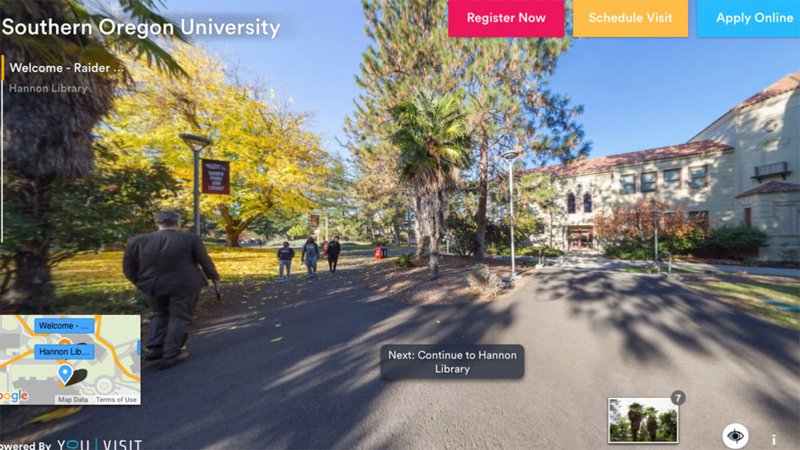
This is especially important for these times because if it wasn’t for social distancing and Covid-19, some potential students would be going on campus tours to see if they like the university and picture themselves there in the fall. However, because that is not possible, providing online tours for potential students is a great way to entice them to your university.
Some students may not have been able to attend campus tours anyway because of distance, so using this time to create a way for students to view your campus even after social distancing will keep you ahead of the game.
8. Add user-generated content
One way that can attract potential students to your university is by using referral marketing, it is one of the most effective forms of advertising. Getting current students to create content for your website and social media platforms will not only attract potential students but can also make them feel like they already belong.
If they decide to attend your university, they will most likely see those students walking the halls and they will already feel comfortable. In this case, you need to understand your prospects and find the most suitable person to create your content.
9. Track your efforts
Like all forms of marketing, tracking your metrics is very important in order to figure out what is working and what isn’t. Marketing is not just about creating content and attracting potential students, but it is to ensure that the content published is performing well. When you begin measuring your metrics, it is easier to figure out patterns.
By finding patterns, you can get a better understanding of the social media platform that you should spend time on to engage your audience. You can identify the ones that you need to improve on and the ones that you should let go of altogether.
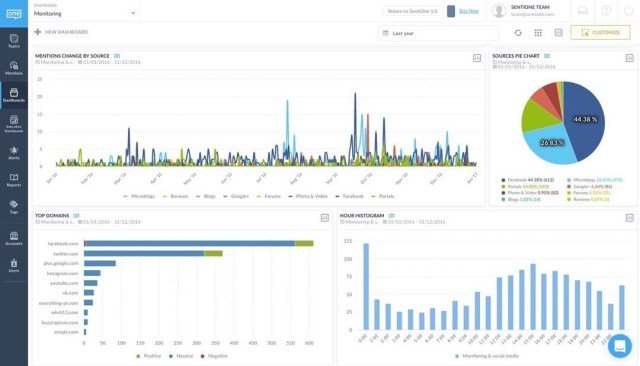
Writing an email newsletter
Now, we are going to focus on just one technique that has proven to have some success in market strategy.
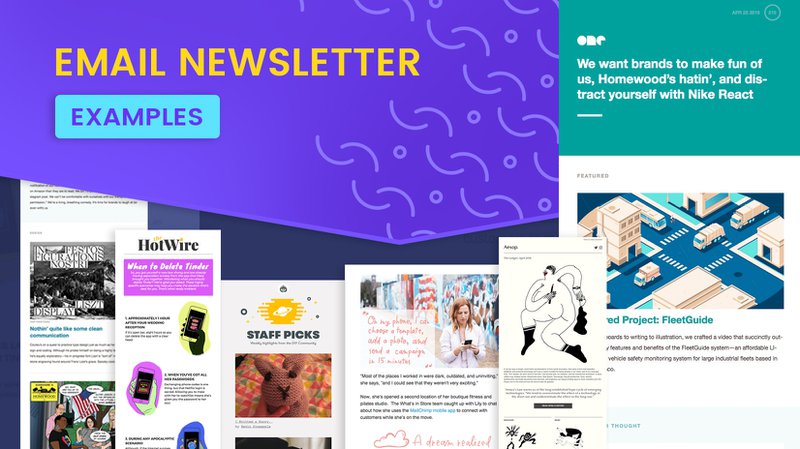
Writing a newsletter is part of a marketing strategy to keep your existing audience interested in your product or service. In connection with education marketing, it is a way for anyone that is part of your institution whether alumni, parents, or existing students to stay updated with everything that is going on and the new things that you are trying to implement.
An email newsletter is a way for a company or industry to inform its audience about the latest news, tips, and updates about what is going on. They can be used for different purposes and formed in different ways; some for weekly content, some for quarterly updates, and some to promote new products.
In order for any type of business to succeed, you need to keep your audience connected, engaged, and informed about the news.
Step 1 – Tips that demonstrate your expertise
The purpose, as mentioned before, is to inform, and educate your audience and build your reputation as a subject matter expert. A way to do that is to provide useful tips and ideas. The best way to attract people to read what you have to say is by being short and to the point, but also including examples and stories to make it personal and possibly using graphics to make it entertaining.
Step 2 – Company news
The goal of this newsletter is to build a relationship with your audience. If they know exactly what is going on and what you are trying to do, they will feel closer to you than with the other competitors in your industry, Remember that anything can be news; introducing a new employee, sharing the results of an event, announcing new things that are happening, celebrating an event, and providing a timeline of events that are going to happen.
Step 3 – Personal image building
People tend to purchase products/services from someone with that they feel a personal connection. Adding some personality to your newsletter can go a long way, so do not be afraid to include your goals and milestones, personal opinions about something related to your industry, the life lessons that you learned, and maybe a challenge that you have had to go through while being part of this industry.
Step 4 – A new product
People are always drawn to new things, they love having inside information that the general public doesn’t know about yet. So, before you launch anything new, promote it in your newsletter to build excitement and it can turn into a quick sale when you finally launch it.
Step 5 – Fun facts
You have already informed people of what is to come, how about spicing things up by entertaining your audience? They will know that you can relate to the general public, while also trying to get people to understand the point that you are trying to make.
Step 6 – Q&A

If you previously created a questionnaire on any of your social media accounts, email, your website, etc. You can include that question and your response in your newsletter. It is also another way to relate with your audience because they will be happy to see that you are connecting with them and actually reading what they are posting.
Step 7 – Industry news and trends
Customers will appreciate your take on current events and what is happening in your industry. It shows that you are in touch with what is going on in the world and what is happening in your industry. The ways to reinforce your reputation as an SME are; reviewing any industry-related materials, telling your readers about a trend or significant change in the industry, and using graphics.
Step 8 – Community events
For small businesses, being involved with the community is a big part of getting publicity. In order to get involved in the community you can participate, attend, or sponsor an event. You can let customers know about these events by putting them in your newsletter.
Step 9 – Accomplishments or unique news
Ending up in the news due to an accomplishment is something that can be added to a newsletter. Things like being featured on a TV or radio story, attending a trade show or industry event, winning an award, etc.
Step 10 – Interviews
It is very interesting to change things up every once in a while to keep people engaged. So, doing interviews with people from your industry will show others that not only do you have knowledge of your industry, but you are seeking out people to give further knowledge about it.
Step 11 – Testimonials and case studies
Finally, testimonials from customers that are happy with your product or service can build trust and even make customers from people that didn’t know about you before. It is important that if you are going to do that, you need to ask customers’ permission to include their full names and any of their social media sites to build credibility.
Case studies are a good way to tell success stories combined with demonstrating your industry knowledge and ability to provide solutions.
Conclusion
Education marketing and writing an email newsletter tie in together because not only are you trying to figure out how to enhance your marketing plan to get potential students, but you are also trying to keep your current students updated about anything new that is going on.
These steps are just guidelines on how to create a plan and an enticing email newsletter. I hope that reading this will help your education marketing plan in the future and during these trying times.
Get started with email marketing
Create beautiful email newsletters for free with Get a Newsletter and reach your subscribers and customers in a heartbeat.
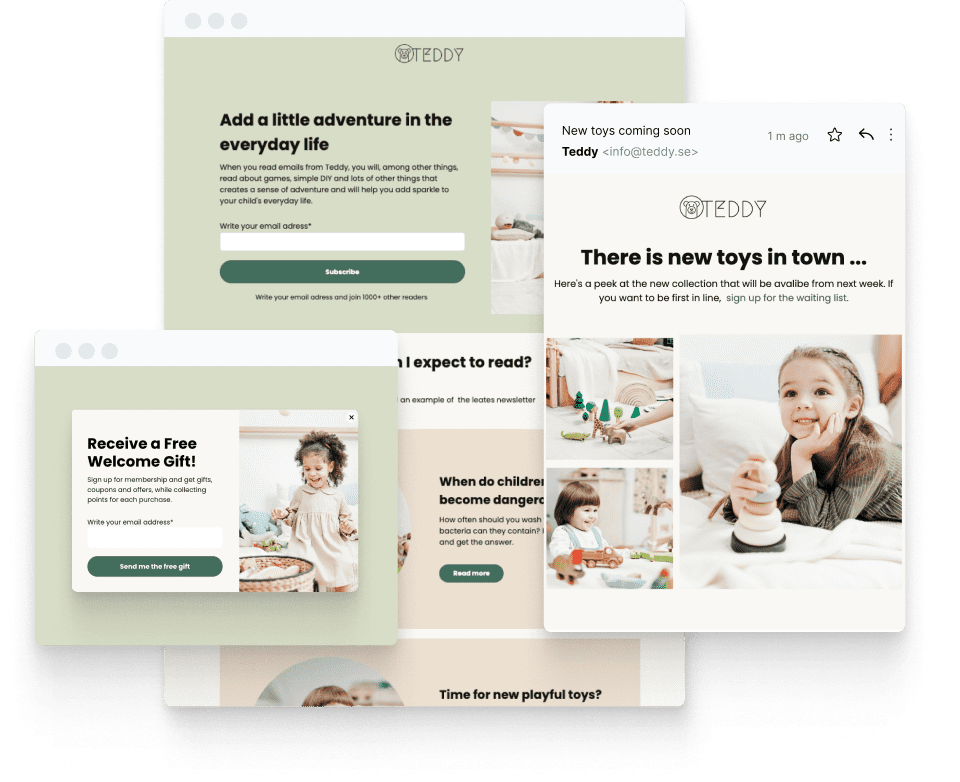
Leave a Reply